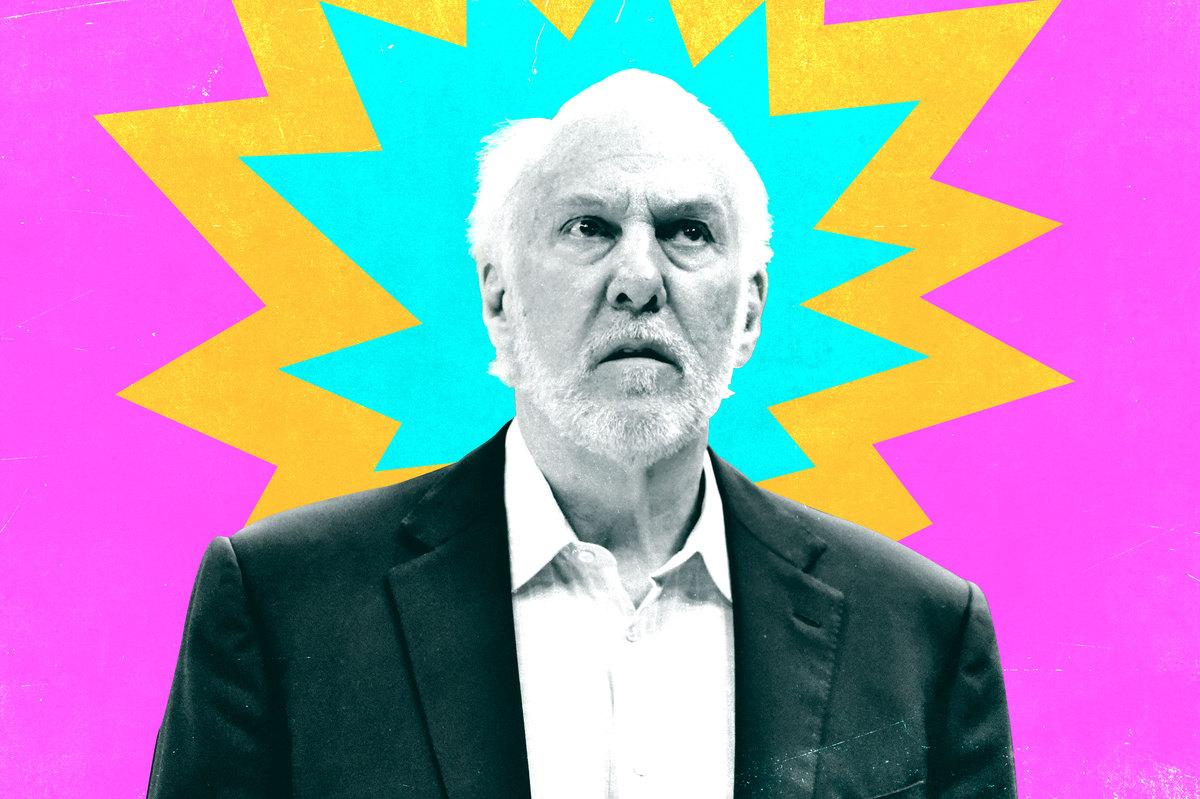
It’s hard to see the point of the DeMar DeRozan era in San Antonio now that it’s over. The Spurs signed-and-traded the four-time All-Star to the Bulls for Thaddeus Young, Al-Farouq Aminu, and three future picks on Tuesday. It was the first step in a rebuild that should have begun three seasons ago. San Antonio wanted to remain competitive when Kawhi Leonard forced his way out in 2018, so it traded him and Danny Green to Toronto for DeRozan, Jakob Poeltl, and one first-round pick. But all that did was delay the inevitable. Now the Spurs are in a worse position than if they had let him walk for nothing.
It would be one thing if the Spurs had been a contender with DeRozan. Instead, they lost in the first round once and missed the playoffs the next two seasons. It has been a long way down for one of the NBA’s most successful franchises. San Antonio had made the postseason for 21 straight years before Kawhi’s departure. They went from David Robinson to Tim Duncan to Kawhi without missing a beat. A streak like that may never happen again. The Spurs did everything they could to keep it going under DeRozan. The problem was that no amount of coaching, continuity, or organizational knowledge could overcome a lack of star power.
Their desire to not rebuild made sense given that coach Gregg Popovich is in the twilight of his career. But no coach is bigger than the franchise. The past three seasons are proof that even one of the greatest coaches in NBA history doesn’t make a difference if he doesn’t have the players to win.
None of it was DeRozan’s fault. He’s just not the future Hall of Famer his predecessors were. He did everything the Spurs asked him in his time with the franchise, averaging 21.6 points on 50.1 percent shooting, 6.2 assists, and 5.3 rebounds per game. DeRozan turned himself into a point forward in his first season there after Dejounte Murray tore his ACL. Then he changed positions in the bubble and played as a small-ball forward to help develop their young players. It would have been nice if he had taken more 3s, but it wouldn’t have changed much in the big picture.
The DeRozan era was dead on arrival. San Antonio was an aging team with no way of getting the kind of elite talent that could have stopped its decline. The Spurs’ second-best player was LaMarcus Aldridge, who was entering his age-33 season at the time of the DeRozan deal. Their third was Rudy Gay, a 32-year-old coming off a torn Achilles in his first season in San Antonio. They were also relying heavily on Patty Mills (30) and Marco Belinelli (32). All those players are gone three seasons later with little to show for them. DeRozan is the only one the Spurs got anything back for in a trade.
It’s not that San Antonio doesn’t have youth. The team has built a core of young players at every position—Murray (24) and Derrick White (27) at point; Keldon Johnson (21), Lonnie Walker IV (22), and Devin Vassell (20) on the wing; and Poeltl (25) at center. But it’s a strength-in-numbers approach. Three averaged between 12 and 16 points per game last season, and none averaged more than six assists. It’s the same issue they have had since Kawhi left: They have a bunch of complementary players with no one to complement.
Their two point guards get in each other’s way. Murray and White have the same strengths and weaknesses: Both are defensive-minded slashers who need the ball and aren’t comfortable spotting up on the perimeter. White attempted a career-high 6.8 3s per game last season but made them at only a 34.6 percent clip. That still put him far ahead of Murray, one of the worst shooters at his position (31.7 percent from 3 on 3.0 attempts per game) in the league. Spurs shooting coach Chip Engelland played an important role in Kawhi’s growth in that area in his time with the franchise, but lightning hasn’t struck twice.
There were times in Murray’s second season, in 2017-18, when he looked like a future star. But his development was derailed when he tore his ACL, and he hasn’t gotten back on track. Now he’s the worst of both worlds—he doesn’t look capable of being a featured player, and his poor jumper makes everyone around him worse when he’s in a secondary role. White is more well-rounded but lacks the elite athleticism or scoring ability of the top point guards in the NBA. He’s a career 51.3 percent shooter from 2 and 35.7 percent from 3.
San Antonio has too many guards who may top out as sixth men on a good team. Walker is the most explosive scorer of the bunch. But that can only get you so far when that’s all you can do. He hasn’t met a shot that he won’t take over his first three seasons. He’s also yet another midrange killer who doesn’t shoot enough 3s (4.7 per game last season) to thrive in a smaller role in the starting lineup.
The death of the long 2 was always overblown. Stars who can consistently make those shots are still the most valuable players in the NBA. But just because some players can take them doesn’t mean that it makes sense to put a whole team of them together. The result is a bunch of youngsters who don’t space the floor for each other and are easy to defend as a unit. San Antonio was dead last in 3-point attempts per game last season. Adding Doug McDermott and Bryn Forbes in free agency should help, but the depth chart is getting pretty crowded.
Johnson, who is currently playing for Team USA in the Olympics, is probably the Spurs’ best prospect. The second-year player fits the mold that every team is looking for: He’s an athletic 6-foot-5 wing who can get to the rim, shoot off the dribble, and defend multiple positions. But he has the same issue as everyone else on the Spurs. He attempted 2.6 3s per game compared to 7.6 2s last season. Johnson needs more shooters around him to open up driving lanes to the rim.
The other hole in Johnson’s game that’s keeping him from stardom is that he hasn’t shown much ability to create for others. He’s at his best, and most aggressive, when he puts his head down and powers through defenders. He doesn’t rely on craft and intuition at this stage of his career. He’s not suddenly going to become a playmaking magician. His career path could be like DeRozan’s in that his growth as a passer will be a slow process that comes from becoming such a dominant scorer that defenses have to send double-teams.
Vassell and Poeltl don’t seem ready to make a leap, either. The former was a plug-and-play 3-and-D player as a rookie but didn’t show the playmaking chops to have a bigger role in the offense, or the scoring ability to pressure the defense. The latter has settled into a role as a defensive-minded roll man who does just enough on offense to stay on the floor. Signing stretch big man Zach Collins to complement Poeltl might have been their best move of the offseason, although it’s more of a long-term play since he missed most of the past two seasons with injury and is recovering from another ankle surgery this summer.
The fundamental problem in San Antonio becomes clear when you look at where its young players were drafted:
Youth in Re ... gression
None were bad picks on their own. But finding a hidden gem like Kawhi (no. 15 in 2011) outside of the lottery is the exception that proves the rule. Even a franchise as well run as San Antonio can’t expect to unearth future stars at that point in the draft. Stacking a bunch of singles and doubles together doesn’t turn them into home runs.
That may explain why the Spurs shocked observers by taking Alabama guard Josh Primo at no. 12 in the 2021 draft even though he averaged only 8.1 points in 22.5 minutes per game last season. Despite his limited college production, Primo checks a lot of boxes as an athletic 6-foot-5 wing with a ready-made 3-point shot (38.1 percent on 3.8 attempts per game). San Antonio is gambling that he has untapped potential because he was the youngest player in the draft and was stuck in a smaller role behind older players on an elite NCAA team. They had to do something. Keep making “safe” picks and they will be drafting in the back half of the lottery forever.
Their young core doesn’t seem that talented once you compare them to their peers in the bottom of the West. The Kings (De’Aaron Fox and Tyrese Haliburton), Pelicans (Zion Williamson and Brandon Ingram), and Timberwolves (Karl-Anthony Towns and Anthony Edwards) all have two players more promising than anyone on the Spurs. The Rockets (Jalen Green) and Thunder (Shai Gilgeous-Alexander) have one.
Even a best-case scenario next season in which the Spurs piece together a .500 team and compete for a play-in berth doesn’t seem that appealing. That would leave them in the same place they were during the DeRozan era, with no cornerstone to build around and no way to acquire one. They don’t want to have as little to show for the next three seasons as they do for the past three. It’s time for San Antonio to get back to what made it great in the first place—getting lucky in the draft and winning the lotteries for David Robinson and Tim Duncan. The Spurs have gone from a model franchise to a cautionary tale.

